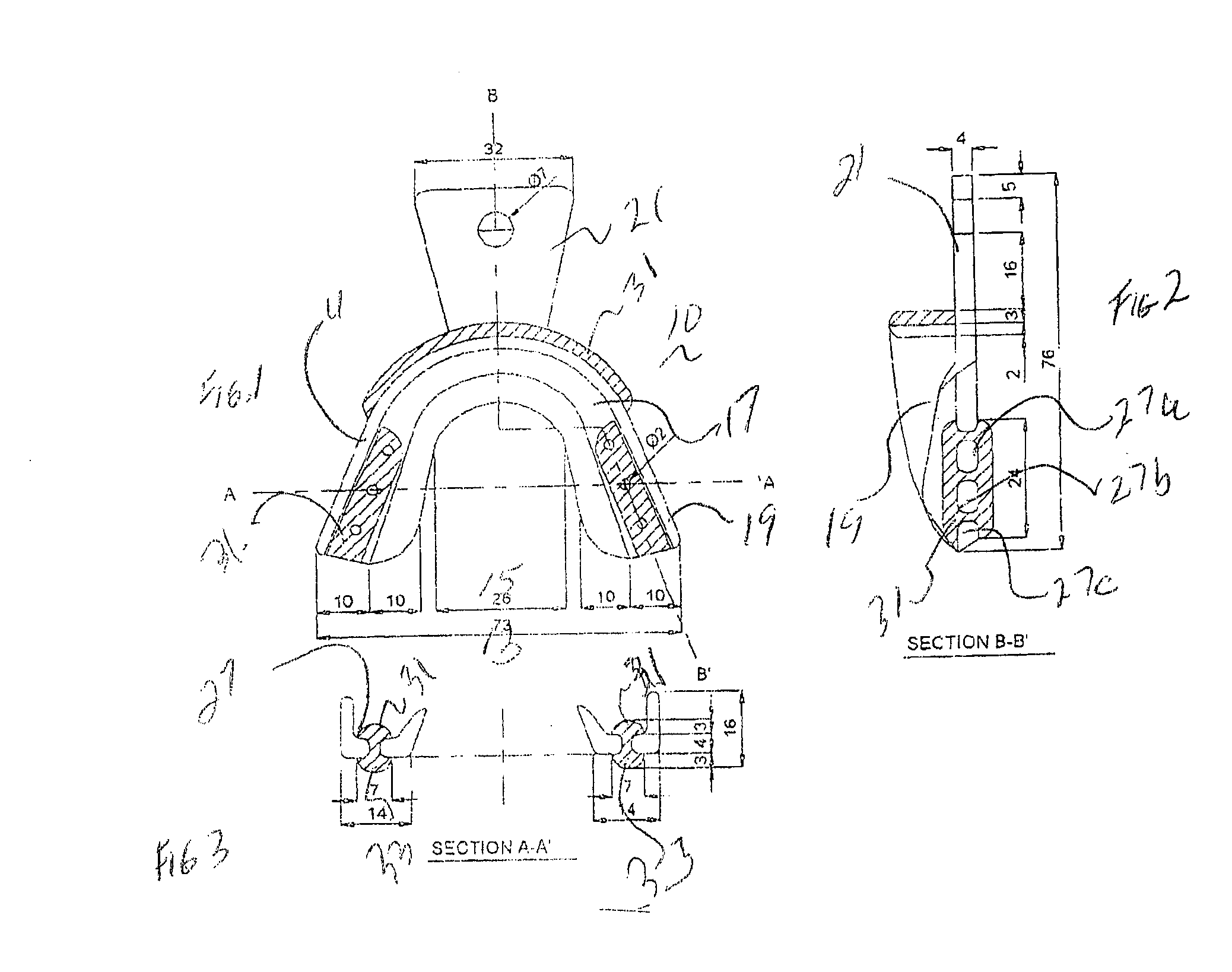Mouthguard
a mouthpiece and mouth technology, applied in the field of mouthpieces, can solve the problems of increasing production costs, increasing tongue and breathing interference, and discomfort for users, and achieve the effect of greater shock absorption ability
- Summary
- Abstract
- Description
- Claims
- Application Information
AI Technical Summary
Benefits of technology
Problems solved by technology
Method used
Image
Examples
Embodiment Construction
[0023] As shown in the drawings, a mouthguard in accordance with the invention, generally shown as 10, includes a first portion 11, which is generally U-shaped and can be adjusted to make the device larger or smaller along dimension 13 as needed to fit the intended user. It is also contemplated that different sizes may be made such that dimension 15 may be different, so the combination of two lengths 13 and 15 will be suitable for smaller and larger athletes and other users. U-shaped first or tray portion 11 includes a base 17, sides, 19 and a tab 21 to assist in insertion of the mouthguard. Located in base 17 are a plurality of holes 27. FIG. 2 illustrates holes 27a, 27b and 27c along the right side of first portion 11 in FIG. 1. First portion 11 is molded by injection molding or other conventional thermoplastic processing techniques, such as through a central tab cavity that forms tab 21.
[0024] After molding first portion 11, it is placed in a second mold and that second mold is ...
PUM
 Login to View More
Login to View More Abstract
Description
Claims
Application Information
 Login to View More
Login to View More - R&D
- Intellectual Property
- Life Sciences
- Materials
- Tech Scout
- Unparalleled Data Quality
- Higher Quality Content
- 60% Fewer Hallucinations
Browse by: Latest US Patents, China's latest patents, Technical Efficacy Thesaurus, Application Domain, Technology Topic, Popular Technical Reports.
© 2025 PatSnap. All rights reserved.Legal|Privacy policy|Modern Slavery Act Transparency Statement|Sitemap|About US| Contact US: help@patsnap.com


